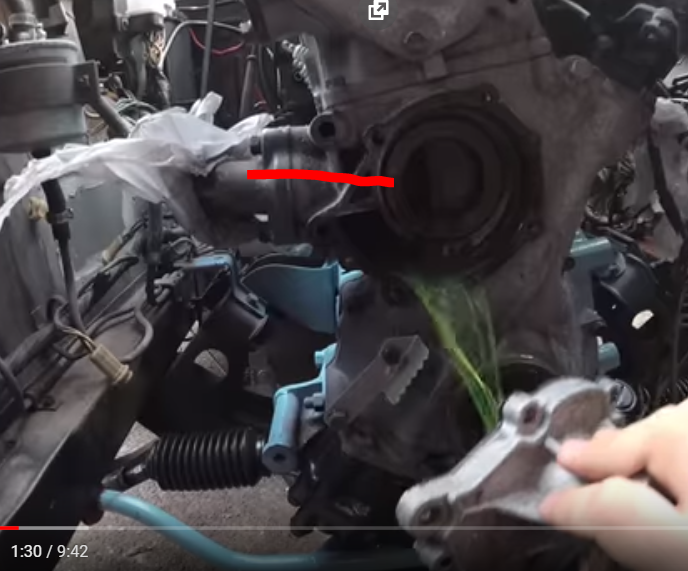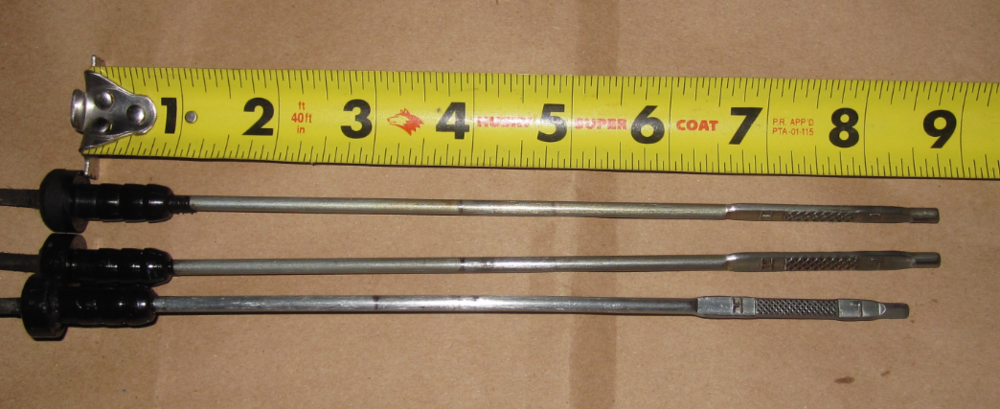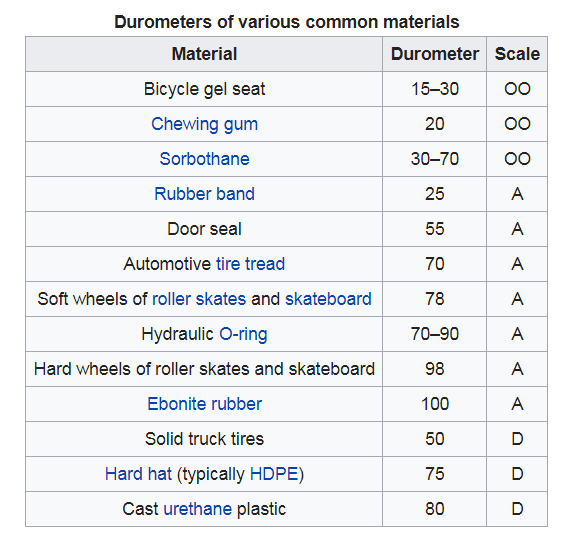Everything posted by Zed Head
-
WTB 280ZX distributor E12-80
Just noticed that spoofan is in Prague. Might not have a local auto parts store that sells ZX distributors. So, considering all, the Z distributor with a GM HEI module seems even better. The modules of the ZX distributor are both the weak part and the expensive part. And the stator magnet isn't very durable either. Overall, the Z distributor is more durable I think. Rockauto has one, of the two pickup style. Looks like they're getting sparse. http://www.rockauto.com/en/catalog/nissan,1976,280z,2.8l+l6,1209226,ignition,distributor,7108 http://www.rockauto.com/en/catalog/chevrolet,1977,camaro,4.1l+250cid+l6,1035100,ignition,ignition+control+module+(icm),7172 Don't overlook the 123 Ignition distributor. It's an electronic option. They're based in Holland, so pretty close. http://www.123ignition.nl/
-
WTB 280ZX distributor E12-80
On the other hand...whoa, the prices are really climbing. I'd get a 280Z distributor and HEI module myself.
-
WTB 280ZX distributor E12-80
You can buy remans from various auto parts stores or I Rockauto. The advantage of the local auto parts store is that you can keep returning the bad ones until you get a good one. Somebody just went through three and still got a bad ignition module. But he made it work.
-
Tokico Adjustable Shocks - Advantages/Disadvantages
I think that you're pretty much stuck with KYB or Stagg. Or modifying your strut tubes. Or buying an aftermaket "coilover" kit. But they're expensive. Not to harp, but another reason to start your own thread, besides getting more looks and responses, is that Mike says so... From the top of the page...
-
Tokico Adjustable Shocks - Advantages/Disadvantages
You should have started a new thread, I think. Mike pretty much covered the pros and cons in his first post. There's a toooooonnnn of threads and posts out there about the various shocks available. Rehash after rehash. Pulverized hash. You said adjustable in your first post but now you're just talking about ride. If you have to have adjustable you'll probably have to modify the strut tube and upper mounting point. Pretty sure I've seen people fit adjustable Bilsteins in to their Z's with some work. Might have been on Hybridz though.
-
Spark Plug, Compression, Gearing, and Power Feedback
He just wanted know if he should change his spark plugs, now he's about to rebuild his engine. I'd do a little more detective work. Still not clear what's actually in there. Could be that it's a perfectly fine engine, and parts, but the chain tensioner popped out. Might just need to remove the front cover and make it right. You can see the pistons through the spark plug holes and tell if they're flat or dished. You can see the chain tensioner from the top if you get your eye in the right place and have a bright light. The notch and groove still work even with a loose chain, to tell if cam timing is right. They measure what's happening on the tight side, while the loose side flops around. You can check the top of the head for machine marks to see if it's been shaved. Although it won't tell you about the bottom. But it's a clue. On the other hand, the unknowns are a good reason to take things apart. But you might find a simple problem that didn't need a teardown. Seems like a full throttle in to the fog adventure at this point.
-
DATSUN LLC Rebuilt Engine Opinion
That is some crazy racin'... Worth a watch.
-
Spark Plug, Compression, Gearing, and Power Feedback
Could be the E88 head has been shaved but the cam towers not shimmed. Seems weird that somebody would bore an engine, with all of the expense of, at least, new bearings and pistons and rings, then put worn out parts on it. Scrapes on the valve cover is a lot of loose, isn't it? The notch and groove will give a clue about if it's jumped a tooth. On the bright side - there's potential for more power once you get the parts right.
-
steering wheel shake 280z while braking
Have the rotors been turned in the past? Could be they did a poor job. Measure thickness and you might be able to tell if they've been turned before. My local NAPA store still turns rotors. $16 per rotor. A funky tire might show up under braking. You could swap back to front and see if there's a change.
-
need help car starts but will turn off after a few secs
I bring this up occasionally - I've had two 280Z's that wouldn't start when the tach was not installed. Beside that, who knows what else is disconnected with the dash out. These cars aren't like an old Chevy that justs needs a wire to the coil and some gas in the carb. Most of the electrical needs to be connected and working for the engine to run. Probably going to have to put it all back together and run the electrical tests in the FSM or the EFI Book. Edit - it's probably running off of cold start valve fuel, and the EFI system isn't even powered. The EFI relay is attached to the dash.
-
Running hot no circulation...Help!
Alright. Must be the passages in the cover that confused me. I'll stand corrected. Until I know better. Something to explore... So you did use a garden hose...
-
Running hot no circulation...Help!
It's the opposite. The coolant is pushed through that hole in to the block, where it flows up and to the head. The hole on the left of the pump is the inlet, from the front cover passage. The back of the pump is all outlet, pressuring that big hole with the passage in to the block. All clear now. Thought I was missing something. Carry on...
-
Running hot no circulation...Help!
The hole I pointed at with the red line is the outlet. Maybe you meant the inlet?
-
Running hot no circulation...Help!
-
engine oil capacity
Here's another link, showing two sticks but one tube. Not sure they got the years right on the stick, but still. Two sticks, one tube. https://zcarsource.com/catalogsearch/result/?q=dipstick
-
engine oil capacity
Forgot to say, measure your tube.
-
engine oil capacity
It's a fun puzzle. You know, the 1979 to early 1980 280ZX used the N42 block and N47 head. Motorsport auto sells a tube and a dip stick but they imply that the sticks are interchangeable so who knows what you're getting. http://www.thezstore.com/page/TZS/PROD/17-8046 http://www.thezstore.com/page/TZS/PROD/classic14g/17-8048
-
engine oil capacity
The ZX pans are different from the Z pans. The sump is more centered in one of them, to fit the different crossmember. Can't remember which is which. You can see in my picture that the ZX F54 block stick is 6 7/8". I didn't mention it earlier but the other half of the system is the tube in the block. You said that you measured to the top of the rubber. Maybe you meant the sealing edge? That sits on the tube? that's where I measured to. If your "ZX" stick measures 7 1/4" then it's not like my ZX stick. I don't know if your part number is right but I do know that it's not the Z part number. http://www.carpartsmanual.com/datsun/Z-1969-1978/engine-280z/cylinder-block/20
-
need help car starts but will turn off after a few secs
Did you disconnect the AFM hose or the wires? Spend more time composing your post before you send it. Describing the problem will help you understand it too.
-
engine oil capacity
Well, that's a bummer. Didn't expect you to pull the trigger so fast. I went out and pulled all three of my dip sticks and took a picture. A 76 and a 78 N42 block, and an 80-81 F54 (1981 2+2 ZX but with an 80 ratio 5 speed, junk yard car sale). You can see the difference in the grid pattern where the oil level would sit, the shorter F54 stick is finer. I also tugged on the rubber seal at the top and it's tight. The ZX stick had some bend to it also. Got a measuring tool? Who knows, my ZX stick might be wrong.
-
Front Lip Reproduction trial
I've worked with polyurethanes of the A scale hardness, 80 to 95A range. They're pretty soft. Found a good chart in the Wikipedia link. Of course, making some small samples would give a good feel for the final product, and would be good practice to iron out process difficulties. It's not uncommon for molds to be destroyed because of poor release. https://en.wikipedia.org/wiki/Shore_durometer#Durometer_scales
-
240z rear wheel cylinder clips
Site provided the picture. I just made a joke. Make sure that the cylinder actually slides back and forth after installation. That's what it's supposed to do. It's self-centering.
-
240z rear wheel cylinder clips
Fish fry or fishing lessons... He's gonna need to fish eventually. Good luck. Post some pictures.
-
Spark Plug, Compression, Gearing, and Power Feedback
Oops, it's right there in the first post isn't it. My mistake. So, back to a full tuneup and a little more detective work. Maybe some minor modifications.
-
Spark Plug, Compression, Gearing, and Power Feedback
Good point. A full tune-up would be the way to go. Piece mealing won't be very fulfilling. Beside that, I don't think that you can get to 2.9 liters on an L24 block without swapping the crankshaft. An overbore alone doesn't get you there. Kind of looking like a run-of-the-mill L24 engine that needs a few mods and a tuneup.










